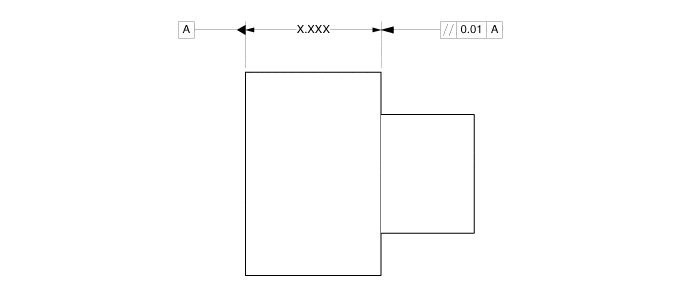
PARALLELISM (PAR–UH-LE-LIZ-UH M)
DEFINITION: PARALLELISM IS THE CONDITION OF A SURFACE, LINE OR AXIS WHICH IS EQUIDISTANT AT ALL POINTS FROM A DATUM PLANE OR AXIS.
If the surface to be machined is to be parallel with the datum plane facing the chuck, how do we control this datum face to ensure that the parallelism results are acceptable? What might explain the challenge in achieving capability? What is the cost of scrap really costing you?
What is needed is a qualified surface on the chuck face that in turn acts as a datum reference for the work piece. A separate, but stationary “part stop” (or “locator”) performs best in this regard.
Why might the results still not be acceptable even if this is the course of action taken?
The primary reasons are due to the chuck itself. All conventional sliding jaw chucks experience a measure of jaw “lift.” There are (4) primary reasons:
- The clearance between the master jaw and that of the body. Thus the phrase “sliding jaw” speaks to this engineered clearance.
- Due to wear this same clearance has increased over time.
- Chuck body flex.
- Hydraulic pressure is too high for the jaw height being used.
While these effects can be further reviewed, the fact remains that sliding jaw
chucks inherently are not appropriate for tightly controlled parallelism requirements.
WHERE DOES THIS LEAVE US?
The earlier described part stop (i.e., locator) still offers us the qualified surface needed, but the chuck, rather than lifting the part away from the part stop, must instead pull the part back against this surface. Only then can we trust the control surface of the work piece to be in the right location, by which to machine the opposite surface and be assured of two parallel surfaces.
In low volume environments the operator can ensure this location surface is kept free of chips and contamination via 100% inspection of this surface, but in a high volume environment this isn’t an option.
If parts are being auto-loaded, how do you know that the work piece is against this desired surface? What is it really costing you if this feature of parallelism is out of control? If we are addressing a downstream part, it is no longer just the cost of the one operation, nor the raw material cost, but additionally the cost from all previous operations combined. In fact, the closer to the last operation we are, the more important it is to ensure that the part quality is kept intact or else risk the total loss of investment.
HOW DO WE PROTECT THIS INVESTMENT WHEN FACING A STRINGENT PARALLELISM REQUIREMENT IN A HIGH VOLUME SETTING?
Essentially, we need to incorporate a validation system and subsequently receive feedback on its performance. In other words, if the part is not against the part stop when loaded, when do you want to find out? Before or after machining? Of course the answer is before the part is machined so that you can correct the misloaded part before it becomes scrap. Systems as described typically present ROIs of less than (8-10) weeks.

